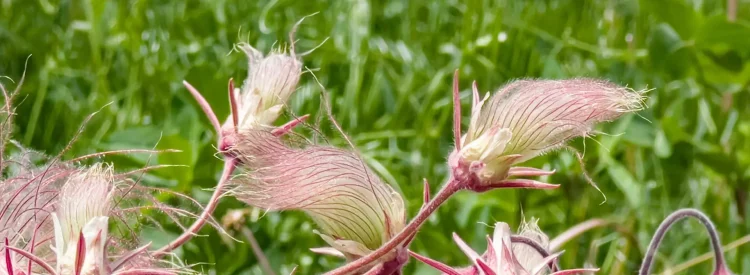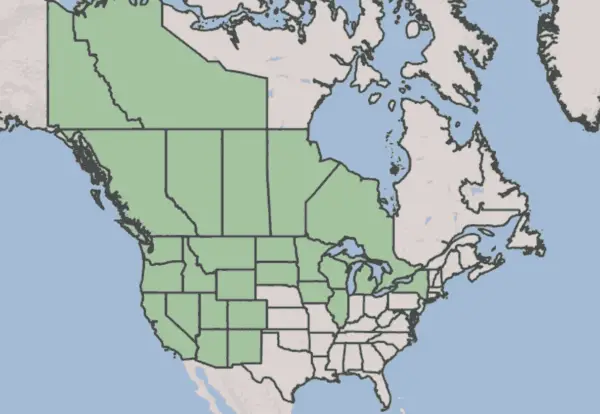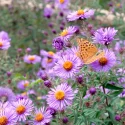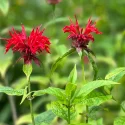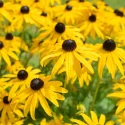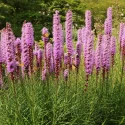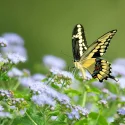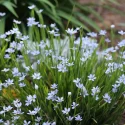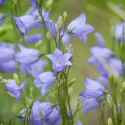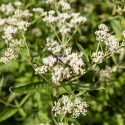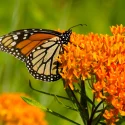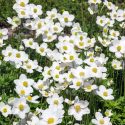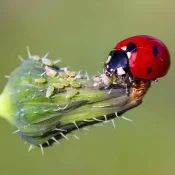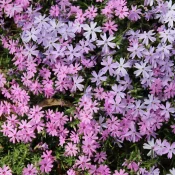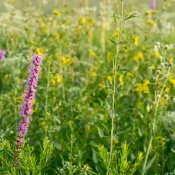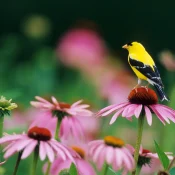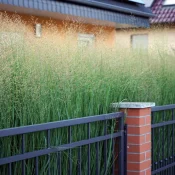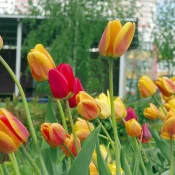This plant’s common name—Prairie Smoke—delightfully hints at its atmospheric, other-worldly appearance. Prairie Smoke’s delicate drooping flowers come first, followed by fluffy seed plumes—which look like tiny puffs of pale pink smoke, if the smoke was drawn by Joan Miró. These are short groundcover plants that look best when planted in groups alongside other native flowers and shrubs. Scroll on for planting tips!
Yes, this is a real plant!
Prairie Smoke is a singularly stunning native flower. (We can’t think of another plant that looks like this one. Email us if you can think of one.) In this article, we’ll show how Prairie Smoke changes throughout the seasons, share some planting tips, and include some pairing recommendations.
You may have arrived at this page by Googling “Prairie Smoke.” We bet this Google search took place within 30 seconds of seeing the plant for the first time.
You may be asking: where has this plant been hiding?
It is a mystery why we have cherry and tulip festivals, and somehow, it’s rare to see our own incredible native Prairie Smoke flower. Once you see one, you want dozens in your yard. It is one of those native plants that is so singularly special that it stops everyone in their tracks when they see it.
There are many reasons for Prairie Smoke’s rareness—non-native landscaping trends, fetishization of exotic plants, etc. The way to bring it back is to plant it in our yards and landscapes.
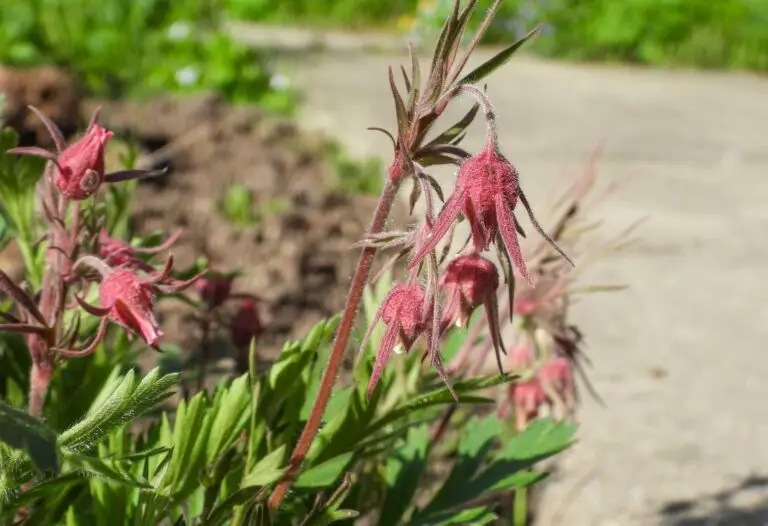
The many names of Prairie Smoke
One of the common names used for this plant is Prairie Smoke. A common name is a plant name given by the generations that came before us. Common names can refer to the way a plant looks, its medicinal value, or even named after a celebrity of the time.
Oftentimes, a single plant can have many common names. This one plant goes by the following common names: Prairie Smoke, Old Man’s Whiskers, Torch Flower, Lion’s Beard, Long-Plumed Avens, and Three-Flowered Avens. (Avens means red in Latin.)
Enter Latin names
Latin botanical names were invented to help with this common name confusion. Every plant has only one, singular Latin name. If you want to be sure you’re looking at the right plant, look for its Latin name: Geum triflorum.
(Sidenote: don’t be scared by Latin names. We all lived through a pandemic and understand terms like non-comedogenic and macchiato. You got this.)
What are the benefits of planting Prairie Smoke?
Prairie Smoke is a native plant found in about half of North America (scroll on for a map.) Native plants have grown in their home areas for thousands of years, thriving through every drought, weather event, and season. Their DNA knows the soil, climate, and weather of their home area better than any other plant on the planet. Always plant native to enjoy beauty with resilience.
There are so many benefits to having Prairie Smoke in your landscape, including:
- Super low maintenance: Prairie Smoke needs minimal care to thrive
- Comes back year after year: this is a perennial, or a plant that comes back year after year from the same roots. So plant once and enjoy for years!
- Drought-tolerant: after Prairie Smoke is established (it normally takes the first year), this plant can handle dry periods in the summer
- Instagrammable beauty. Beauty matters. A gorgeous landscape with native flowers lifts spirits and helps us feel connected to the natural world. Plant a patch of Prairie Smoke and see for yourself.
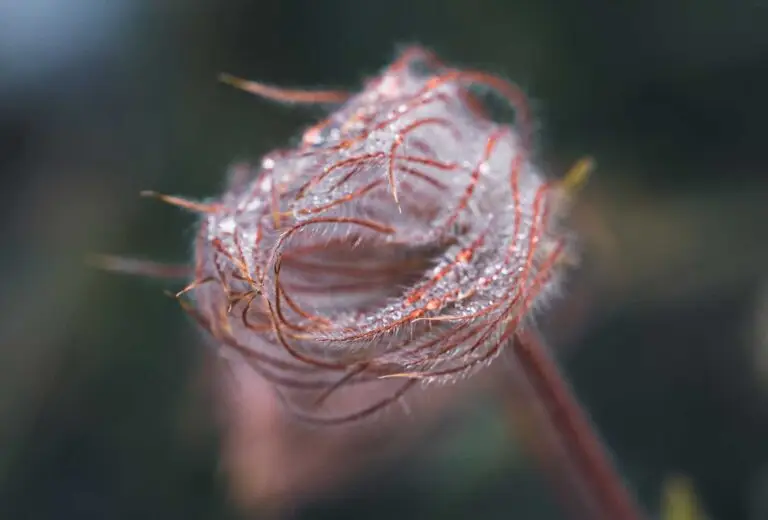
Prairie Smoke is deer-proof
Deer do NOT eat Prairie Smoke. If you’re worried about deer nibbling your garden, planting Prairie Smoke is a good native gardening choice.
Prairie Smoke through the seasons
You see the full spectrum of nature’s creativity when you see a Prarie Smoke native flower transition through the seasons. Here’s how this native perennial changes throughout its growing season:
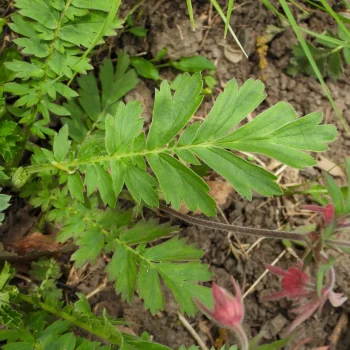
Late Winter / Early Spring
Prairie Smoke starts with gorgeous green leaves, low to the ground. The leaf shape is striking: dense yet articulated leaves look like were cut from paper.
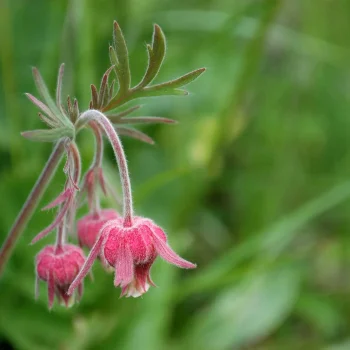
Spring
In the late spring (May/June) Prairie Smoke flowers appear on delicate stalks, looking like tiny fairy bells. (Brooklyn Botanic Garden describes the flower shape as “miniature serpents rearing their heads.”)
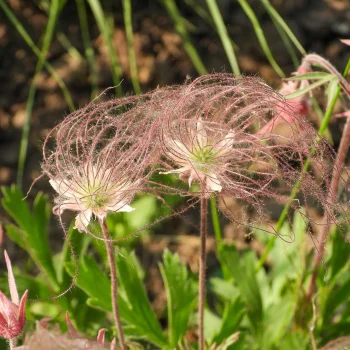
Summer
After the flowers open and fade, the smoke appears in the form of long strands of feathery hairs. These seed plumes stay on the plant for 4-6 weeks. The greenery stays verdant during this time.
How to grow Prairie Smoke:
There are a few tips for growing this native plant, including:
- According to Wisconsin Horticulture, “It needs moist conditions in spring, tolerates drier conditions in summer, and does not like to be wet in winter. A southern or western exposure is best.” Or, to say it another way…
- SUN: Prairie Smoke thrives in a wide variety of sunlight, from full sun to part sun.
- WATER: Prairie Smoke likes a well-drained area. According to Prairie Nursery: “Wet and soggy winter conditions may cause the plants to die back.”
- Do NOT mulch around the plant. It likes to a well drained, not too wet area.
Where is Prairie Smoke native?
Prairie Smoke is native from New York west to California. In part due to climate change, it is also now growing in Mid-Atlantic and Northeast gardens.
The Humber Arboretum has a great overview video with planting tips alongside some examples of what it looks like in landscaping:
Where to find Prairie Smoke for your garden
Now that you’ve fallen in love with Prairie Smoke, you’re ready to find some to plant in your garden.
Sadly, finding specific native plants can be challenging, especially at conventional plant nurseries. To make this a little easier, here are four ideas to find some Prairie Smoke for your yard:
Where can I find seeds and plants?
Finding native plants can be challenging (we partly blame Marie Antoinette.) To make it easier, we’ve assembled four sourcing ideas.
300+ native nurseries make finding one a breeze
Explore 100+ native-friendly eCommerce sites
Every state and province has a native plant society; find yours
Online Communities
Local Facebook groups are a great plant source
Now that you’ve found some ideas for sourcing Prairie Smoke, let’s keep garden planning and add some other native plants and flowers.
Now you’re probably asking…
What are good pairings for Prairie Smoke?
Prairie Smoke is best paired with other native perennials that like the same dry conditions but flower at different times. This ensures your garden always has something in bloom and the pollinators always have something to eat. Great pairings include Blazing Star, Rattlesnake Master, coneflowers, many species of native milkweed, and the grasses Little Bluestem and Purple Muhly Grass.
Native flowers for summer
Native plants for the fall
And now you’re ready to plant a few Prairie Smoke native plants in your garden! These native flowers look great as borders or in large groupings, thanks to their short height. They may be difficult to find in conventional plant nurseries; call ahead or visit a native-specific nursery to find some. Or better yet—start from seed in the early spring and watch them return year after year. Visit some other prairie-friendly plant profiles including Beginner’s Guide to Blazing Star or Beginner’s Guide to Bee Balm. Happy planting!
Sources
- Brooklyn Botanic Garden, Native Perennials: North American Beauties. (1996), 57.
- University of Wisconsin-Madison, Prairie Smoke.
- Ladybird Johnson Wildflower Center, Prairie Smoke.
- Nelson, Gil. Best Native Plants for Southern Gardens: A Handbook for Gardeners, Homeowners, and Professionals, (2010).
- Harstad, Carolyn. Go Native! Gardening with Native Plants and Wildflowers in the Lower Midwest. (1999), 209-210.
What if your feed was actually good for your mental health?
Give your algorithm a breath of fresh air and follow us.
